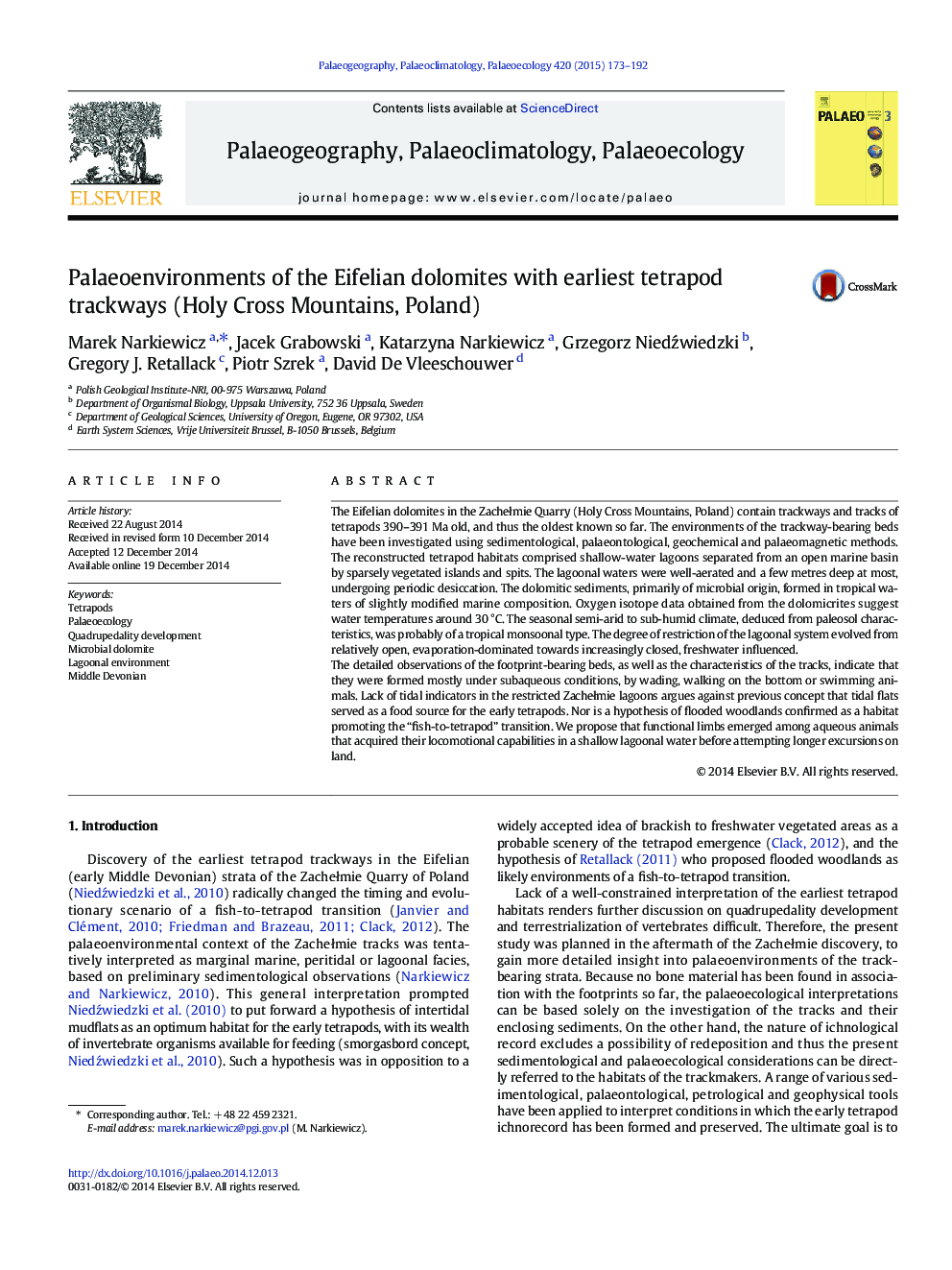| کد مقاله | کد نشریه | سال انتشار | مقاله انگلیسی | نسخه تمام متن |
|---|---|---|---|---|
| 4466065 | 1622170 | 2015 | 20 صفحه PDF | دانلود رایگان |

• The earliest tetrapod trackways were formed in shallow-water lagoonal dolomite muds.
• The tideless Zachełmie lagoons were surrounded by sparsely vegetated islands or spits.
• In most cases the animals were at least partly submerged while wading or swimming.
• Limbs developed probably among aqueous animals, predating their terrestrialization.
The Eifelian dolomites in the Zachełmie Quarry (Holy Cross Mountains, Poland) contain trackways and tracks of tetrapods 390–391 Ma old, and thus the oldest known so far. The environments of the trackway-bearing beds have been investigated using sedimentological, palaeontological, geochemical and palaeomagnetic methods. The reconstructed tetrapod habitats comprised shallow-water lagoons separated from an open marine basin by sparsely vegetated islands and spits. The lagoonal waters were well-aerated and a few metres deep at most, undergoing periodic desiccation. The dolomitic sediments, primarily of microbial origin, formed in tropical waters of slightly modified marine composition. Oxygen isotope data obtained from the dolomicrites suggest water temperatures around 30 °C. The seasonal semi-arid to sub-humid climate, deduced from paleosol characteristics, was probably of a tropical monsoonal type. The degree of restriction of the lagoonal system evolved from relatively open, evaporation-dominated towards increasingly closed, freshwater influenced.The detailed observations of the footprint-bearing beds, as well as the characteristics of the tracks, indicate that they were formed mostly under subaqueous conditions, by wading, walking on the bottom or swimming animals. Lack of tidal indicators in the restricted Zachełmie lagoons argues against previous concept that tidal flats served as a food source for the early tetrapods. Nor is a hypothesis of flooded woodlands confirmed as a habitat promoting the “fish-to-tetrapod” transition. We propose that functional limbs emerged among aqueous animals that acquired their locomotional capabilities in a shallow lagoonal water before attempting longer excursions on land.
Journal: Palaeogeography, Palaeoclimatology, Palaeoecology - Volume 420, 15 February 2015, Pages 173–192